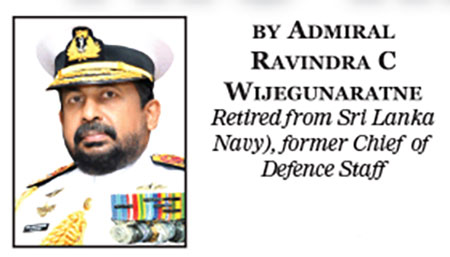
I was very happy. A small project we started in 2011 in the Northern islands, Karainagar, Eluvativu, Analativu, Nayanativu (Nagadeepa), Punkudativu, Kytes and Mandativu was yielding the desired results after 10 years.
In 2011, we observed the mangroves on islands systematically were destroyed by some individuals, who did not care about their ecological value, for illegal income. As there was a shortage of firewood, especially at bakeries in the Jaffna mainland, the mangroves were cut for firewood. Mangrove wood is ideal for bakeries as this hard-wood gives a lot of charcoal. We would see bicycles carrying large loads of dry mangrove wood from the islands to the mainland, along causeways.
With the support of the Police, the Sri Lanka Navy (who were controlling the security of the Northern islands) put an end to the illegal trade. Now, the mangroves grow freely and lavishly, increasing the size of the islands, while providing protection to shellfish breeding grounds. You may be aware that crabs, shrimps and prawns lay their eggs in mangrove areas, which are not accessible to big fish and other predators.
My deputy in the Northern Naval Area, in 2011, when I was Commander Northern Naval Area, Admiral Piyal De Silva (former Navy Commander and our former Ambassador to Afghanistan), had, original, a fresh and a unique idea of re-planting the mangrove. We started the project near the Karainagar causeway. A few hundred mangrove saplings were planted, as per instructions given by experts on the subject. After three months, it became a failure. We were wrong in some places when replanting. I told Piyal, “Let’s try again”. It failed again. Only six out of hundreds of saplings survived.
When Piyal was the Northern Commander in 2017, he found, after a careful study, what had gone wrong. Flooding and ebbing of the lagoon water every six hours disturbed the roots of mangrove saplings, which died as a result. The solution to the problem was also found by Piyal. Four-foot-long sticks were erected in the lagoon to support the mangrove saplings. This method worked well and now Karainagar lagoon has more than 600 fully grown mangrove plants.
Chinnama, an elderly lady who harvests crabs in lagoons, was perhaps the happiest person. Those days when we were young officers, we used to buy fresh prawns and crabs from her during weekends. These fresh shellfish go down well with palmyrah toddy.
Mangroves, under Piyal’s supervision, were growing well and Chinnama’s catch has improved. She has become an ardent protector of mangroves in the Karainagar lagoon, and the Northern islands were growing in size !
(Admiral Wijegunaratne, WV, RWP and Bar, RSP, VSV, USP, NI (M) (Pakistan), ndc, psn, Bsc (Hons) (War Studies) (Karachi) MPhil (Madras), is formerly the Navy Commander, Chief of Defense Staff, Chairman, Trincomalee Petroleum Terminals. Ltd., Managing Director Ceylon Petroleum Corporation and High Commissioner to Pakistan.)
from The Island https://ift.tt/MAsNdwO





No comments:
Post a Comment